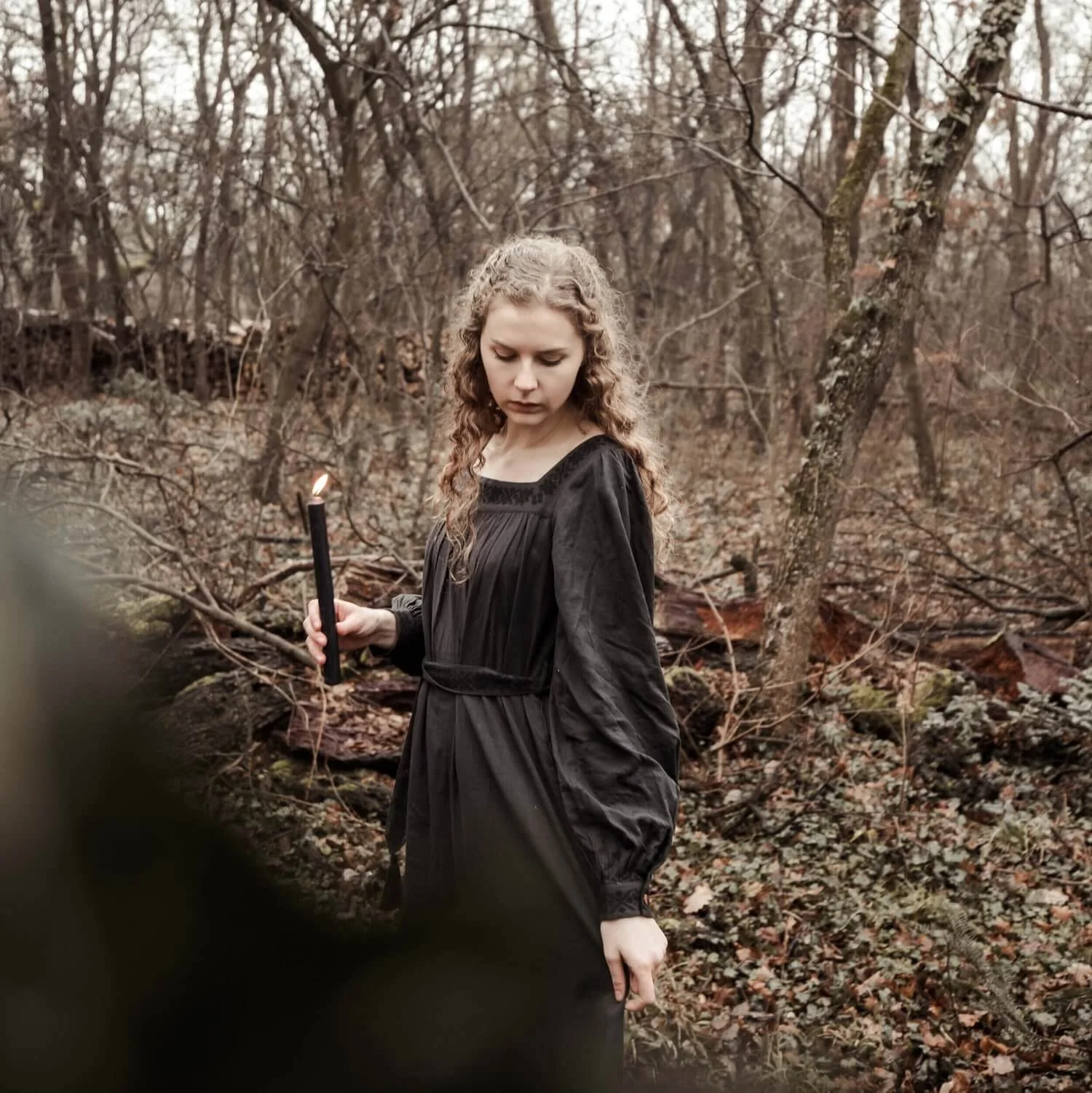The Celtic Goddess Brigid
The ancient Celtic goddess, Brigid, can be traced all the way back to Pre-Christian Ireland. She appears in Irish mythology as one of the most prominent goddesses and a daughter of the Dagda.
Brigid has many associations which have led to confusion around her function as a goddess. Her main associations are with poetry, healing, water, fire, smithing, and protection. Brigid's associations also change after the introduction of Christianity to Ireland where Pre-Christian tales and religious doctrine become intertwined.
There is so much ambiguity around Brigid but through my own research, I have been able to find evidence for how Brigid was worshipped. Scholars have so unearthed so much about which offerings were given to her and the different symbols associated with her that it's almost like looking through a window into the past.
Through this research, it's far easier to draw meaningful conclusions about how this Celtic goddess was worshipped in the past.
Who is Brigid?
Brigid or Brig is a Celtic goddess from Pre-Christian Ireland. Although it was once thought that was strictly an Irish goddess, actually references to Brig can be found all over Britain, even in Scotland and Wales.
Brigid means “exalted one” and in Proto-Celtic. It also means “The High One” showing that throughout all time she has had a high place in the Celtic pantheon.
This reputation is why scholars have said she is one of the most popular and beloved deities in Irish history. The goddess Brigid wasn't just popular in ancient times, but also after Christianity was introduced to Ireland.
Saint Brigid appears in the church record during the very early medieval era as a saint that was known for her healing and almsgiving works. She was even referred to as “The Mary of the Gael” associating her with the same importance as the Virgin Mary to the Gaelic people.
While it’s not fully known if the Goddess Brigid became Saint Brigid, or if her many attributes because synchronized into the saint, it’s clear that the foundation on which Brigid stands was built many thousands of years ago.
What is Brigid the goddess of?
Brigid is a mysterious goddess. Her many varied associations reveal she has been worshipped in many different capacities through time. She has been connected with the hearth, fire, water, healing, and even oak trees.
It's not easy to identify exactly what Brigid is the goddess of, and actually, in my research, it has been suggested that we may never know because this kind of information was never recorded. To find the truth we can look at the many associations Brigid has.
One of her most prominent associations is with women. Saint Brigid was a nun and belonged to a convent of only women, and in the past, her cult temple at Kildare was said to have been exclusively women too. The Kildare druidess cult was said to have one single flame that was kept alive by the priestesses of the Fire Temple.
The associations between women, and druidesses, mean that Brigid was likely a patron of women and women's education.
The goddess Brigid's symbols
“In Ireland, the pre-Christian sun-symbol is found on stone slabs whose date in uncertain, but it is found on a number of slabs dating to the very early Christian period… The history of Saint Brigid’s cross is probably analogous to that of the cross-in-the-circle, a symbol of the old faith. ”
Brigid's most iconic symbol is the cross that's associated with her. Brigid’s cross is made by weaving reeds over one another to form an equal arm-length cross. They’re usually hung over doors and are said to bring good luck and protection.
What could the cross mean? The history, archaeology, and customs of ancient communities reveal that Brigid's cross is actually a solar symbol said to bring prosperity and luck. The center of the cross is the sun and the spokes of the cross represent the movement of the sun’s rays radiating outwards.
The goddess Brigid's symbol, the Brigid's cross, also has similarities with an ancient symbol called the sun-cross. The sun cross can be found throughout many ancient cultures like Tibetan Buddhism, Egypt, and Native American traditions.
In Europe, one of the oldest ancient civilizations to be found, The Vinca Culture of the Danube valley, also has a solar cross symbol. The Vinca symbols, sometimes known as the Danube valley script are a Neolithic symbol system found in artifacts near modern-day Romania. These symbols are thought to be an early writing script and contain many variations of the solar cross.
The Celtic goddess Brigid's symbol is related to the Triskele, which can be found carved into ancient burial mounds like Newgrange. Both Brigid's cross and the Triskele are symbols of the sun. The Celtic cross, a related symbol, also has similarities to Brigid's cross.
Brigid’s crosses were also said to only be made by women for good luck, showing a strong connection between Brigid and women. Even though Brigid has a strong association with solar symbols, it's a stretch to say she was a solar deity. Solar symbols are used by many ancient cultures to represent prosperity and luck since the sun is important to crop growth.
The prominence of the Celtic goddess Brigid's symbols could mean that Brigid was an important deity for ancient communities for protection and renewed abundance of the land.
Is Brigid British?
If you thought the goddess Brigid was just an Irish goddess, then think again. References to the goddess Brigid have been found throughout ancient Britain. This reveals just how important she was to Pre-Christian communities.
In Wales, Brigid is written as Ffraid. References to her and her cult popped up in the 8th century, and then after she was referred to as Saint Ffraid. The writings of Saint Ffraid, say she was a nun who gave generously to the poor, matching perfectly descriptions of the Irish Brigid.
The goddess Brigid story in Welsh legend shared how the Christian Saint Brigid ended up as Saint Ffraid in Wales. Brigid came to Wales by floating across the ocean on a woven mat of reeds. She then founded a church, or perhaps a priestess cult where she landed.
In 1997, excavations at the legendary site of the church found underneath the sand dunes were about 400 stacked graves belonging to the late ancient period. These could be the remains of the priestesses that tended to the cult. The chapel stood on the mound until 1913 when it was swept away by a violent storm.
The importance of the goddess Brigid
Whether you're in favor of Pre-Christian goddess Brigid or Saint Brigid, it's undeniable that Brigid had an impact on both the old and the new worlds.
Brigid, the goddess, druidess, and saint, reveals how important Brigid remained throughout the ages. Her druidess past emphasizes how learned women were valued in ancient Ireland, which contrasts to the waning respect women reaped in Christian times.
Brigid is a rare goddess and saint that emphasizes the importance of kindness, charity to others, strength within yourself, and the esoteric mysteries of life. How she was worshipped reminds us that no matter how much society wanted to repress women, in the end, Brigid still rose to be on top.











In the German-speaking world, the 12 days of Christmas are called Raunächte. It refers to a time when ghouls and dark premonitions roam the wild winter landscape